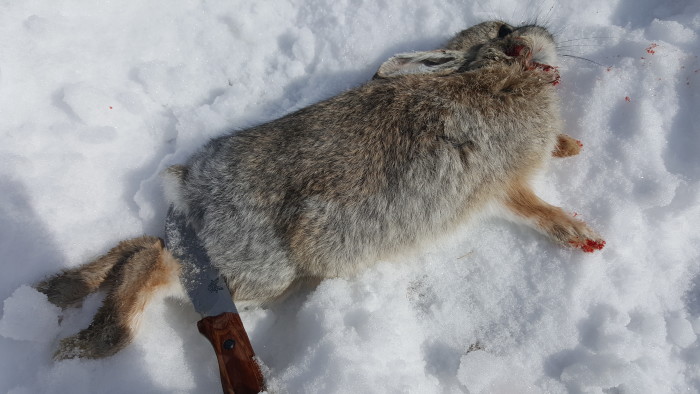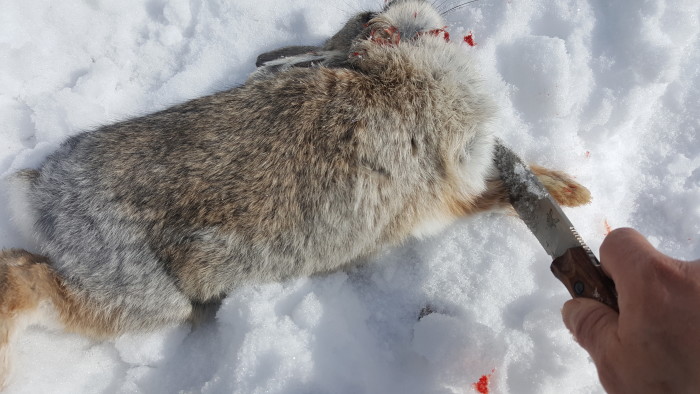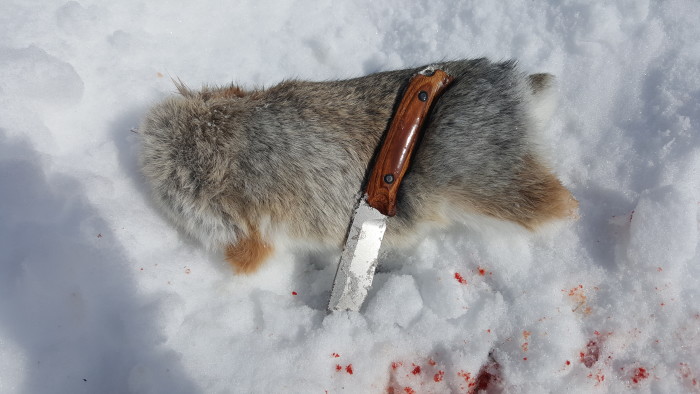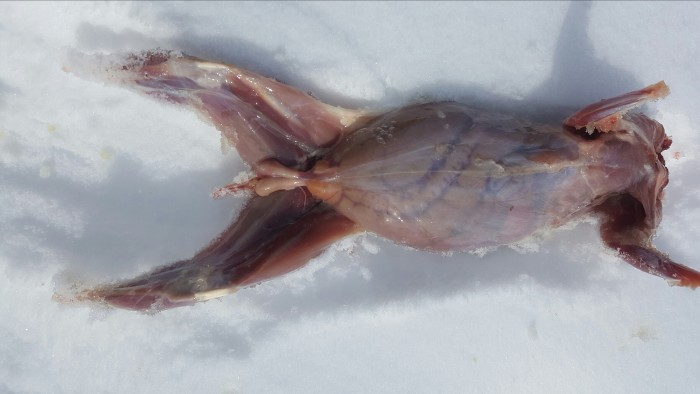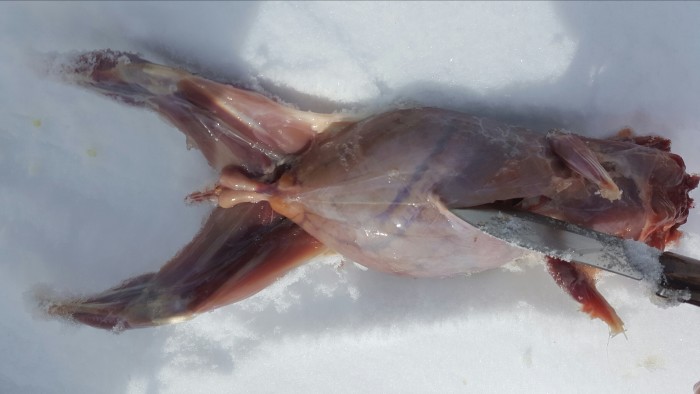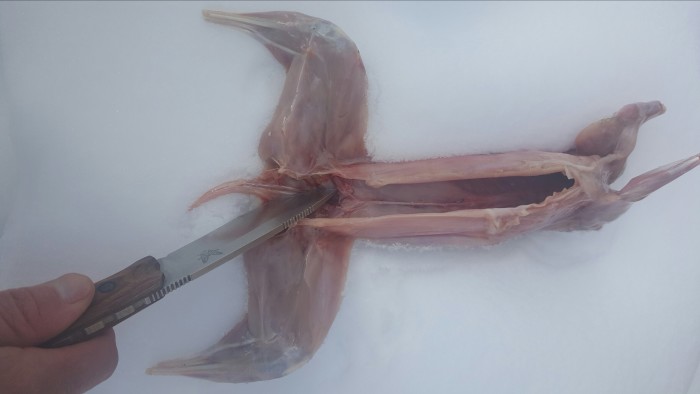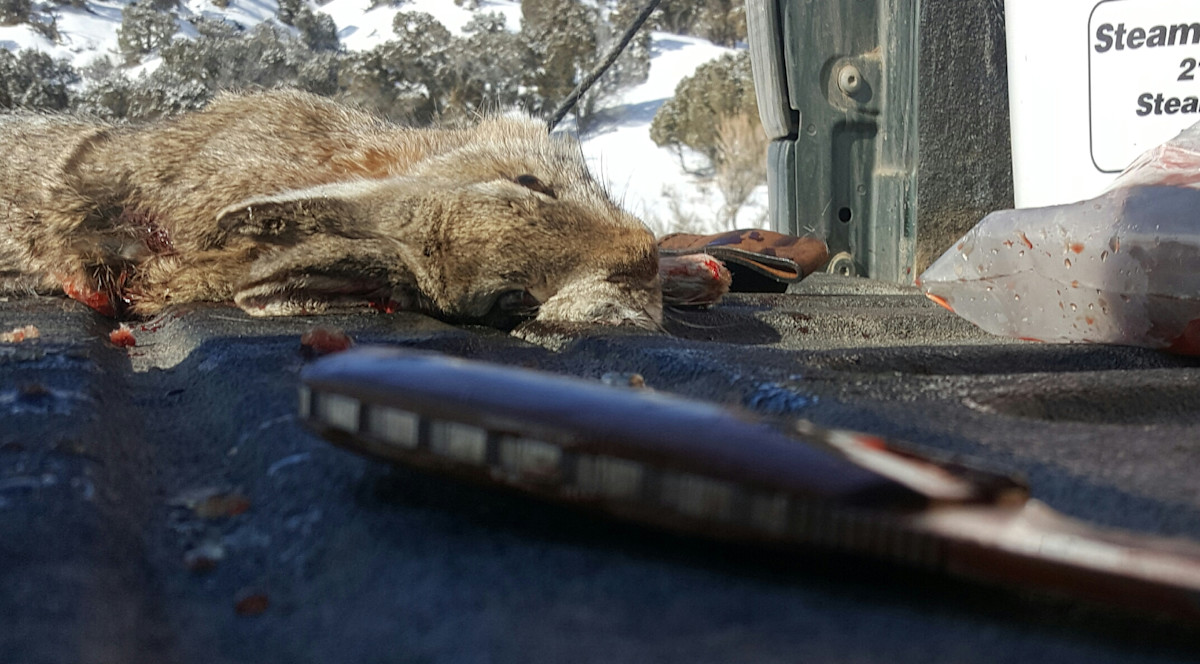
A smart hunter who values their meat supply would never intentionally avoid field dressing a big game animal for an entire day. Quickly removing the hide and guts from big game animals cools the meat quickly, which prevents spoilage and poor flavors. Many hunters, however, are not nearly as careful with their small game. They often let small game animals such as rabbits, grouse, and ducks ride around in their truck or hunting vest for an entire day before they take the time to clean and cool the carcass. This can lead to soured meat, off-putting “green” bellies, and flesh that is tainted from contact with the animal’s digestive enzymes. It’s better (and tastier) to deal with field care duties soon after your quarry is in your hand.
The Complete Guide to Hunting, Butchering and Cooking Wild Game, volumes 1 and 2, offer in depth explanations of proper field care. But here’s a quick primer on how to take care of your small game.
First off, don’t think that cold weather will necessarily allow you to put off gutting your kill. It is an animal’s internal body heat that causes problems. Gutting and skinning small game and birds is generally a pretty simple and quick task. So, I like to take to care of it immediately, in the field, as I’m hunting.
I gut upland birds, waterfowl and turkeys straightaway after recovery. I’ll save plucking or skinning for later but removing the guts begins the cooling process. When I’m rabbit or squirrel hunting, I take it a step further and completely skin and gut immediately after killing one.
I keep the carcasses clean by storing them inside gallon-sized Zip-Locs. I always make sure to have several of these bags in my pack. Once home, after a quick but thorough wash, the meat is ready for the freezer or frying pan.
An animal that is quickly and cleanly skinned is also free from any parasites like fleas or ticks that might otherwise take a ride in your game pouch. Tularemia, or rabbit fever, is known to be transmitted to humans via fleas and ticks. This disease, while rare, should be on the radar of small game hunters. There are different levels of symptoms and effects from Tularemia and some can be very severe.
The easiest way to determine if a rabbit or the fleas on a rabbit are a vector for Tularemia is to examine the animal’s liver. If the liver is dotted with white spots, discard the rabbit and wash thoroughly with strong soap. It’s a good idea to clean rabbits wearing rubber or latex gloves but with careful cleaning and a quick liver inspection don’t worry too much if you forget gloves. Keep in mind, contracting Tularemia from cottontails is very uncommon. I’ve killed and eaten too many rabbits to count; inspecting each and every liver and never run across a cottontail I knew to be infected.
Before completely skinning and butchering, don’t forget to check your state regulations regarding animal identification. For example, hunters must leave a wing attached to waterfowl and upland birds or a foot attached to a wild turkey while transporting the carcass. You can follow these rules and still gut your animal in the field.
Field Care Tips
To gut a bird, make a cut from the breastbone down to and around the cloaca (anus) and then reach past the intestines into the chest cavity and pull all of the internal organs free at once.
Here are the steps I follow for quickly field dressing rabbits. You can easily adjust this technique for squirrels. Find a clean, flat spot to work.
- First, remove feet at lower joints with knife. Pull upward while you cut downward. They’ll cut and break easily.
- Remove head with knife. You can pull the hide apart easily at the neck to facilitate a clean cut that doesn’t push fur into the flesh.
- Once the head is removed, peel the hide apart at neck exposing clean flesh. Grasp neck/shoulder area of carcass and pull hide down towards rear legs slowly. Most, if not all of the hide will peel easily away from the carcass.
- Remove any remaining pieces of hide. The carcass should be clean and free of all fur. Take the time to remove any fur clinging to the carcass.
- Next, make a shallow gutting incision from sternum to anus being careful not to puncture the intestines.
- Cut pelvis, open rear legs and free rectum with knife.
- Reach into upper chest cavity through diaphragm and pull all internal organs free of carcass. You can keep the heart and liver of all small game.
- Now is a good time to cut away any blood shot meat or shotgun pellets.
- Clean carcass with water or snow if necessary and store in plastic bag.
Don’t worry too much if fast action prevents you from immediately taking care of your small game. You can get away with delaying field care for a little while without any ill effects but quickly cleaning your kill will pay off with higher quality wild game meat.
Brody Henderson is a hunter, fly fishing guide, writer, wilderness production assistant for the MeatEater television show and MeatEater‘s Community Manager

